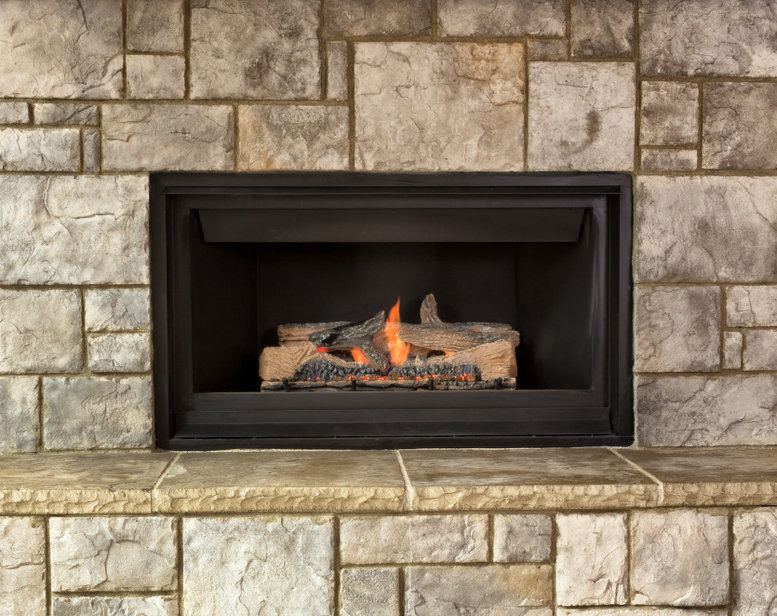How do Ventless Fireplaces Work?
Ventless fireplaces are usually connected to a propane or natural gas line installed by a professional. Unlike your usual gas stove in the kitchen, they are designed with special burners that allow the gas to burn cleanly, leaving almost no exhaust behind. You can think of it as a gas unit fitted with a control panel that controls the flames and the pilot light.

Ventless fireplaces use non-combustible artificial logs with holes that allow flames to pass through. It works in a U-shaped path where oxygen is channeled from the room through the bottom of the fireplace. The outside air and propane are mixed in the regulator to produce fire. The top is of ventless fireplace units are designed with small vents to release air back into the room.
Types of Ventless Fireplaces
- Propane-Fueled Units
The ventless fireplaces that are fueled by propane or natural gas can be positioned in any place where a supply line can be installed. This can be inside an existing masonry fireplace or against a wall. The latest models have an automatic ignition feature that eliminates the need for installing an outside electrical circuit that helps spark the pilot light when the power cuts out.
- Gel-Fueled Units
Gel-fueled units, on the other hand, are more versatile than ventless fireplaces fueled by propane or natural gas. They light with a match and are completely self-contained because they are not tethered to a supply line. A dedicated circuit is not necessary for a gel-fueled ventless fireplace and electrical units only require a 120-volt outlet nearby.
Advantages of Ventless Fireplaces
Ventless fireplaces are more versatile than the traditional wood fireplace because they do not require vents to bring in fresh air or push out fumes. They can be installed in any room, unlike traditional fireplaces that are tied to rooms with a flue. Although the location of ventless fireplaces can vary, their flames often remain static because fire emits from precise gaps in the artificial logs when propane, gel, or natural gas is fed into the unit. The unit has a regulator that ensures the right balance between propane and the air in the room. Ventless fireplaces are viewed as a better option for users’ health and the environment because they do not pollute the air with ash or debris.
Disadvantages of Ventless Fireplaces
Although ventless fireplaces are perceived as a budget-friendly alternative to their traditional counterpart in terms of installation and maintenance, there are major concerns about their safety to users’ health. The theory behind this debate is that any fireplace requires oxygen to burn efficiently but releases high levels of carbon monoxide because of the combustion. Other states in the United States have either banned the use of ventless fireplaces or prohibited them in certain home spaces. It is not a DIY job that anyone can do this proper installation requires a professional. Over time, a ventless fireplace can produce an odor because the combustion products are circulated through the room.
What to Know When Purchasing a Ventless Fireplace
It is important to choose a model that fits perfectly within a room. Not only is it for aesthetics but also for the air quality. The propane-fueled ventless units are costly but generate more heat while gel-based units are relatively cheaper but produce less heat. Before purchasing a ventless fireplace, it is crucial to research your state’s regulations on the model you are going for. Despite the precautions regarding testing and safety, ventless units come with a long list of detractors that you need to be aware of.
Since ventless fireplaces circulate combustion through the room, it is crucial to take safety precautions to keep you and your family safe. Installing systems that detect high levels of carbon monoxide and having it inspected regularly by a professional can help minimize the risks associated with ventless fireplaces. You can also reduce any potential dangers by following safe operating guidelines from the manufacturer.
